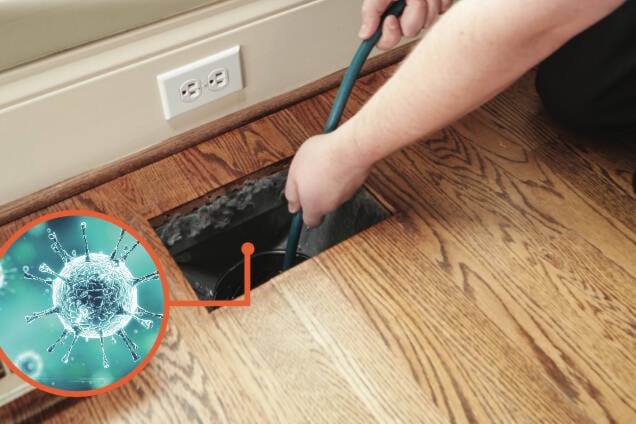Do you know your IAQ? When it comes to indoor air quality, we often focus on the things we can see – pet fur or dust, for example. But many things that can affect things like our breathing can go unseen, like garden allergens tracked inside or dust mites in your blankets.
“Many COIT customers and consumers are concerned about the indoor air quality in their homes, especially related to the potential buildup of dust, mold and other allergens or contaminants in the air duct system and they want to know how to remove it and prevent this type of buildup,” says Irene Rimar, President of COIT Cleaning and Restoration Services B.C.
”Air duct cleaning should be conducted every one to two years for a healthier home. Having a clean, properly functioning heating, ventilating and air conditioning (HVAC) system is vital to maintaining a clean, healthy and comfortable living environment.
Here are some ways to improve your IAQ, or indoor air quality
1. The first step to cleaner air is to remove or avoid the sources of as many allergens or contaminants as possible. Examples include pollinating plants, pets dander, bedding that can’t be washed in hot water and overstuffed furniture – and stuffed animals – where dust and dust mites collect.
2. Keep your home’ surfaces clean and uncluttered, especially in the bedroom where you spend one-third of your time, and where dust mites thrive. The most effective method of controlling dust mites is to enclose mattresses, box springs, pillows, and all bedding in allergen-impermeable (mite-proof) covers. In addition:
- Each week, wash all bedding in hot water (130°F). Wash mattress pads and blankets every two to four weeks in hot water.
- Avoid wool blankets and mould-attracting foam-rubber cushions, pillows or mattresses.
- Avoid blinds and heavy, billowing curtains. Instead, install window shades.
- Keep pets out of the bedroom.
- If using a floor covering, opt for low pile carpets and throw rugs that can be washed.
- Remove all boxes, old shoes, knickknacks and dust-collecting junk from under the bed
- Don’t place your bed over a heating vent where dust gathers and can’t be accessed easily for cleaning.
- Avoid eating in bed.

3. Vacuum and dust once or twice a week. It’s important to keep carpets clean and dust-free, but keep in mind that vacuuming will not get to dust mites deep in carpets. Professional carpet cleaning may be necessary.
When vacuuming and cleaning:
- Use a vacuum with a HEPA filter or special double filter bags.
- Wear a quality dust mask.
- Wear clothes you can wash in hot water immediately after cleaning – only hot water kills dust mites.
- Wear plastic gloves.
- Use a damp or treated cloth to trap dust.
- If possible, leave the house for several hours after cleaning to allow any lingering dust in the air to settle.
- Take a shower after cleaning.
- Implement a ‘no shoes in the house’ policy to keep carpets clean and reduce the number of allergens entering your home.
4. Reduce humidity and moisture build-up. Mould spores and dust mites thrive in moist environments, especially in spaces like the kitchen and bathrooms. To help control mould and mildew:
- Fix all leaks originating from outside (windows, doorframes, roof, etc.) as well as inside (plumbing).
- Clean mould and mildew from surfaces and fabrics, such as shower curtains and bath mats.
- Limit yourself to only a few houseplants.
- Install a dehumidifier to help reduce both mould and dust mites, but note that proper maintenance is key.
- Circulating outdoor air into the home helps reduce humidity but allows pollen and dust to enter.
- During warm months, your air conditioner can both reduce humidity and filter outdoor allergens such as pollen and mould. For pollen allergy sufferers, it’s best to keep windows and doors closed and set the air conditioner to ‘re-circulate.’ Be sure to clean or replace filters regularly.
- Limit mould growth in air conditioning ducts by running the unit for 30 minutes after it’s been turned off.
- In winter, run your heating system regularly to keep the house dry and prevent mould and mildew from forming.
- Schedule regular HVAC system maintenance, including air duct cleaning to prevent dust, dirt, pollen and contaminants from collecting in your ductwork.
When you need your ductwork cleaned, it’s important to call a company that provides professional, thorough air duct cleaning services with a pricing policy you can trust.
COIT has provided state-of-the-art air duct cleaning services for more than 25 years, and service backed up 100% by our exclusive satisfaction guarantee.
Call the pros at COIT in Nanaimo at
READ MORE: Post-summer, pre-holidays: Now is the time to deep-clean your home or office
